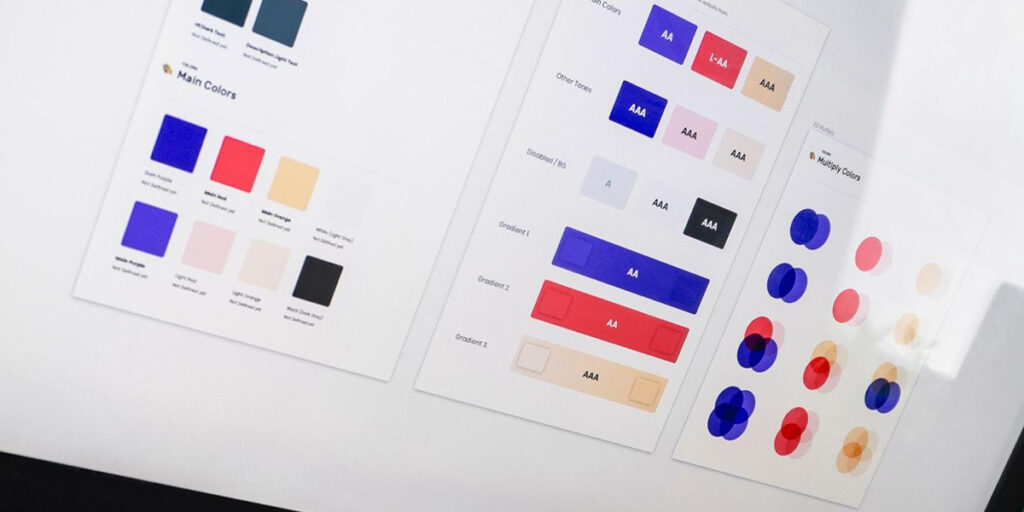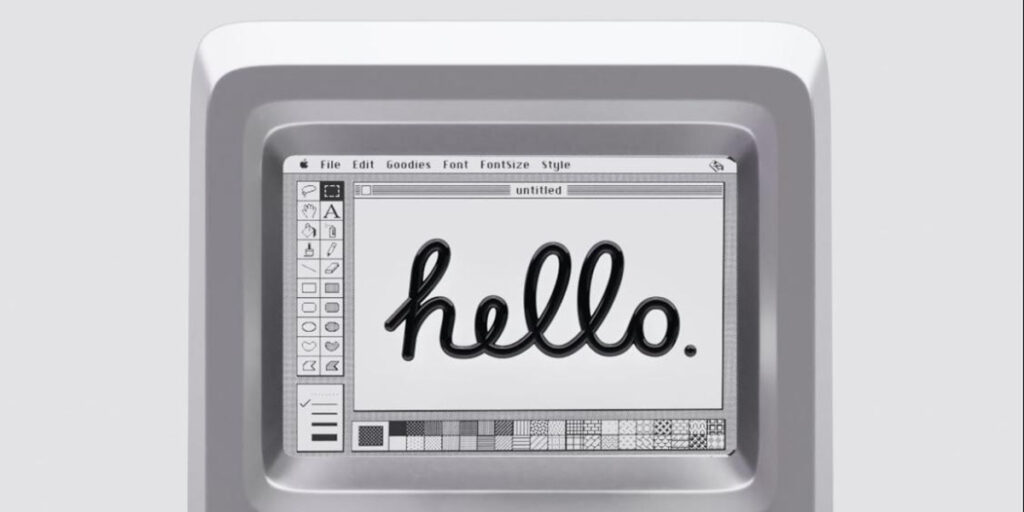Whether you are an established or an emerging web designer, it is important to stay ahead of the curve and be familiar with the latest trends that are sweeping the industry.
Not only does this allow you to offer modern solutions in an extremely competitive market, but it also helps you continuously sharpen your web design skills and repertoire of design ideas that you might use in your next project.
On occasion, you may need to address forms you hadn’t previously considered, such as universal design that incorporates elements that make access easier and inclusive for visitors with varying degrees of abilities and disabilities.
That being said, here are 10 web design trends you should explore in 2022.
1. Large Typography In Hero Sections
Last year was all about hero images, and this year we are seeing more websites with oversized and eye-catching typography coupled with a monochromatic color scheme in hero sections. This eye-catching combo is intended to capture the attention of any website user and leave a lasting impression on them.
A larger text size makes a statement where you need it to, and it can be used for tying other design components together. This is a unique method that works well in both minimalist and maximalist designs and blends well with a variety of styles. Want to see this in action? For starters, our blog practices this. Jobber’s Painter Salary Guide, whose typography could attract even the world’s fastest skimmers also does a great job of using large typography.
2. Material Design: Still Going Strong
It may seem like it’s been ages since Google first introduced the concept of material design to the world—come to think of it, 2014 was a while ago—however, this design language continues to be widely used in web design solutions today.
A descendant of the traditional flat, paper-like design, material design uses shadows, animations, and colors to give the illusion of different lighting and textures. Aside from modernizing the appearance of flat designs, material design adds embellishment to improve UX and usability. That is why this design language remains a popular choice for websites that involve a lot of intuitive user interactions and a clear site hierarchy.
3. Minimalist Design
Simplicity as a trend in web design has been gaining traction for several years now, and it remains one of the go-to design choices for many companies and individuals. That’s because often the simplest website is the most effective. Not only does it focus your message, but also it is easy for visitors to navigate and find the information they seek. That alone can improve conversion and sales from a website.
A frequent expression of minimalist web design is the one-page website. website format does away with multi-page menus and navigation in favor of easy scroll navigation and playful color schemes. It performs well for portfolios or single-idea presentations.
4. Borders And Lines
Borders and lines can be used to separate sections like paragraphs, headers, and product galleries, or they can be combined into a dynamic grid spanning the entire page. An organizational chart maker is a great way to visualize the value of borders and lines, used as a diagram of your company or organization’s hierarchical structure.
Some designers choose to take it a step further by adding linework illustrations, whereas playing around with the line weight can have a fun and versatile effect on the final result of your design.
Borders can also help the user clearly distinguish two sections from each other which enhances the user’s browsing experience, but also allows you to display more content without making the page appear too cluttered.

5. Behavioral Design
Combining psychology with technology, behavioral design helps the user interact with a website – and especially its associated apps – in a predetermined way, which allows the website or app to support the user’s behaviors and help them take specific actions or practice desirable habits (like jogging, cycling, meditating, etc).
Many fitness and wellness companies use behavioral design in their products and apps, and their success stems from their ability to engage their audience using carefully orchestrated design. Since the pandemic has given rise to at-home versions of products like fitness, health, and meditation apps, behavioral design is now widely used and the AI and machine learning that shape it will continue to advance in 2022 and beyond.
6. Memphis Style for a Fresh and Colorful Look
One of the defining stylistic trends of the 1980s, Memphis design used to be regarded as a flashy style, combining a plethora of chaotic patterns and shapes. It used to represent a rejection of minimalism and art critics’ ostensibly sophisticated tastes, and it embraced more colorful, easygoing, and experimental approaches to design.
Memphis defies convention and promotes creativity, freshness, and individuality. If you are not one to follow the current stream of minimalistic techniques in web design, you might choose to turn to Memphis for a burst of vibrant personality that no website user can easily forget. Our advice is to use a calm color palette with colors that are actually relevant to your business, industry, or niche.
7. Fun Scrolling Designs
Scrolling animations aren’t exactly new, so the key to getting the most out of this design style is to surprise website visitors with a unique experience. Psychedelic graphics, parallax effects, and 3D breakthroughs are transforming pages into living worlds in 2022.
As these animations have become more intricate and trippy, many designers are opting to integrate a strong foreground element for visitors to focus on. While an engaging animation motivates visitors to scroll to the bottom of the page, the foreground keeps them from getting lost along the way.
8. Glassmorphism
What used to be known as neomorphism in 2020 and 2021 has evolved into the more complete glass look known as glassmorphism. It is exactly what it sounds like: design components that look like they’re made of glass.
Glassmorphism is based on creating a 3D interface and designing slightly transparent glass panels on a vibrant and blurred background. You can experiment with different colors, but since this design style is all about making the website look slick and clean, try not to overwhelm the background with too many color combinations.
9. Gradient Styles in Text
Elaborate gradient styles are becoming one of the most popular web design trends. In previous years, they were commonly used to modernize the look of websites and provide depth to flat images.
Nowadays, they are frequently seen in text color fills for emphasis, as well as a fill in illustrations or icons to create a textured depth effect. Gradients also serve to add some flavor to otherwise dull-looking web pages.
10. Retro Designs
Bright backdrops, graphic table layouts, and robotic fonts are some of the distinguishing characteristics of retro web designs which hark back to styles from the 1990’s.
Needless to say that, in the 1990s, people were mainly concerned with how to develop a website, but not with website UX and usability.
Although some of the aforementioned style elements might evoke those problems, they are nevertheless incredibly quaint and amusing when done right nowadays, especially with the use of many contemporary design effects such as animations.

Conclusion
As a designer, you want to stay alert to all the trends in design that can serve your clients well. So, whether your personal design aesthetic is elaborate or simple, traditional or edgy, you’ll want to find inspiration for designs that suit your clients’ brand looks while also helping you broaden your abilities and sharpen your skills beyond your favorite go-to styles. The more on-trend shapes, styles, and techniques in your repertoire, the better you’ll do in a competitive market.